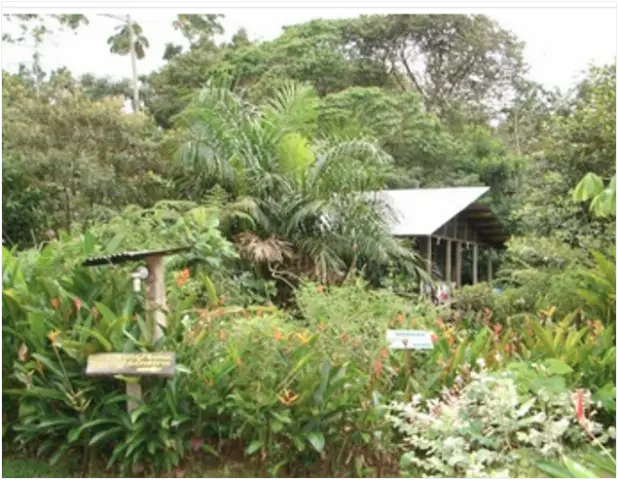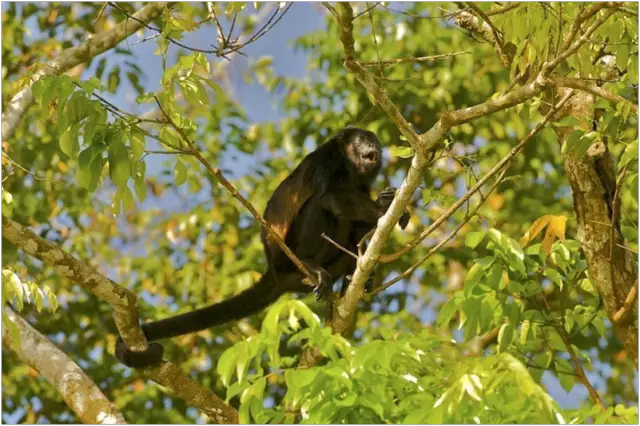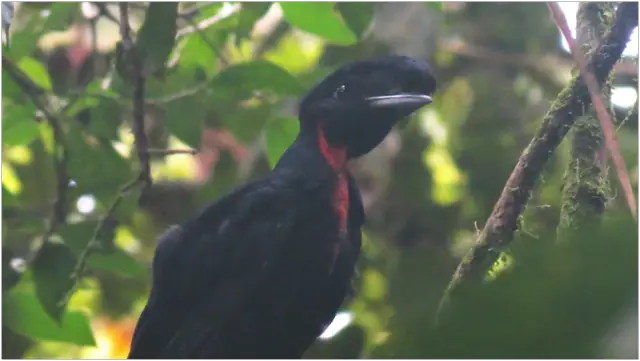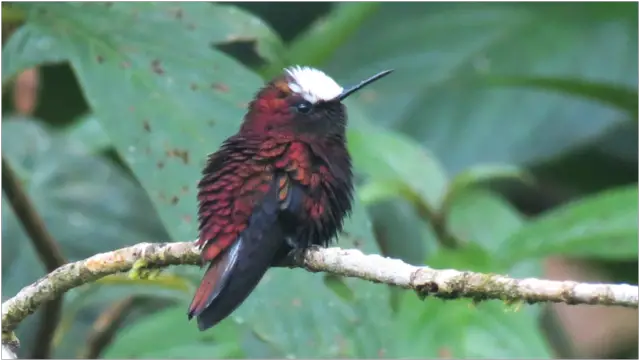This summer, I was a research intern at the Caño Palma Biological Station, which is located in the remote rainforest of the Caribbean Coast of northeastern Costa Rica. The station is located near the village of

Tortuguero and is surrounded by beaches to the east, and rivers and canals to the north, south, and west. It can only be reached by boat as there are no roads near the station. The station is a non-profit organization that was founded in 1991 by the Canadian Organization for Tropical Education and Rainforest Conservation (COTERC). Its mission is to provide leadership in education, research, and conservation of tropical rainforests. The station does long-term monitoring of the distribution and abundance of the wildlife in the surrounding rainforest, canals, and beaches. The research projects include mammal surveys (observations, tracks, and feeding behavior), tagging and measuring nesting sea turtles, monitoring local migration patterns and behavior of Great Green and Scarlet Macaws, as well as amphibian and reptile diversity surveys. The station relies on interns and researchers from all over the world to assist with research projects. They live and work together at the station. Interns usually stay between 6 weeks and 6 months. During my stay, the number of interns varied from 6 to 16, and most of them came from universities in the United States, Canada, France, and the Netherlands.


This was my first visit to the Costa Rican rainforest, and it turned out to be one of the best learning experiences I’ve ever had. Although my main interest was in birds, I had the amazing opportunity to learn about other wildlife as well. I participated in research by surveying tropical forest birds, Great Green and Scarlet Macaws, sea turtles, caimans, mammals (including jaguars, peccaries, and armadillos), and several species of bats (Jamaican Fruit Bat, Watsons Fruit-eating Bat, and Honduran White Bat). I also took data on behaviors of Great Green and Scarlet Macaws as well as Neotropical River Otters. Every morning, I would wake up at 4:30 am to go into the rainforest, take a kayak along the rivers, or walk along the beach for these wildlife surveys. I would spend about 7 hours each day collecting data and several hours a week entering the data.


During the internship, I had amazing experiences with a wide variety of wildlife. The incredibly loud howler monkeys were in the station garden almost every day while we were cooking dinner, along with the very adorable white-faced monkeys and spider monkeys. I observed several 4-meter-long crocodiles patrolling some of the larger rivers. One crocodile ended up going onto the beach where we normally would do the turtle surveys. Because of the crocodile, the surveys had to be put on hold for a few days (How many people can say that we couldn’t go to work because of a crocodile!).

However, the highlight of my internship was my experience with a green sea turtle. The green sea turtles themselves are fascinating animals; they can grow up to four feet in length and weigh over 350 pounds. They spend nearly all of their lives in the ocean, except for when they come onto beaches to nest once a year in the middle of night. The beach next to the Caño Palma Biological Station is a well-known location for observing green sea turtles, and many interns have been working on turtle projects on this beach.
One night while I was monitoring the beach, I was fortunate enough to observe a turtle emerge from the ocean and come onto the beach to nest. She dug a massive hole in the sand, undeterred by my presence, and once she was ready to lay her eggs, I placed my hand under her tail to count the eggs.
Each egg slid off my hand and into her pit, and when she was done, I had tallied 102 eggs—actually slightly below the average egg count of a green sea turtle. By the time she had finished nesting and returned back to sea, the sun was already coming up, which was very unusual (usually, they return to sea well before sunrise). This was a once-in-a-lifetime encounter with one of the world’s most unique species.
I also enjoyed the incredible birding opportunities around the station. The haunting calls of the Great Tinamou and Laughing Falcon would wake me up every morning. Yellow-throated and Keel-billed
Toucans would move through the garden as we were eating lunch. Five kingfisher species would dart along the rivers, including the 5-inch American Pygmy Kingfisher, one of the world’s smallest. White-collared Manakins were one of the more common birds at the station— in fact, the manakins had made the forest next to the station their lek site. Manakins are quite unique among birds in that they form leks, meaning many males will congregate in a small patch of forest. When a female arrives, the males will begin flying around the forest and making very loud snapping noises by snapping their wings together above their back. For a period of a couple weeks when I first arrived at the station, I would hear these snapping sounds almost constantly. In my free time, I would take a kayak into the nearby villages to go birding, where I saw a variety of beautiful species such as Slaty-tailed Trogon, White-fronted Nunbird, and King Vulture.

Before and after the internship, I had the opportunity to travel around Costa Rica on my own to experience and learn about the country’s birdlife (as incredible as the birds were at the station, the Caribbean Coast is actually by far the least diverse area of Costa Rica for birding). Before the internship, I visited the Cordillera Central mountain range, a range that stretches between eastern Costa Rica and western Panama and has many endemic birds found only within that mountain range. Among the birds that live here is the Resplendent Quetzal, one of Costa Rica’s most iconic and beautiful birds. I wasn’t able to see any of the exquisite males with their long tails, but I did enjoy nice looks at a female feeding a juvenile—short tails, but still beautiful! The hummingbird diversity in this mountain range was incredible, as I saw nearly 30 species of hummingbirds in under a week. Among these species was the Snowcap, a tiny hummingbird whose snow white cap contrasts greatly with its dark copper body. After the internship, I visited an area of cloud forest near the town of Guapiles, specifically looking for the Bare-necked Umbrellabird, a bizarre species with its mohawk-like crest and bare patch of skin around its neck. It is endangered due to fragmentation of cloud forests. Guapiles is one of the best places in the world to look for this species, and I felt fortunate to have excellent looks at a male umbrellabird perched on an exposed branch 30 feet away.

I was sad when my adventures in Costa Rica came to an end. I had many amazing encounters with magnificent birds and other wildlife, and made lots of friends from across the planet who also have a deep passion for nature and the outdoors. I was inspired by the conservation work of Charlotte Foale and Manuel Arias, who are the hosts at the station and lead the research. It was a fantastic learning experience to be part of their research and conservation team. The wildlife surveys and behavioral studies I did are a contribution to the long-term monitoring data which are indicators of the health of the various habitats that surround the station. I was especially excited to have contributed to the monitoring studies on the local populations of Great Green and Scarlet Macaws, both of which have been increasing. The long-term monitoring studies depend on interns and volunteers, and I can highly recommend participating in the research of the station. I would like to thank Charlotte and Manuel for giving me this amazing internship opportunity and making it such a rich learning experience. I also like to thank the Los Angeles Birders for supporting me and funding my travel through their scholarship.

For those who have experienced shifts in consciousness and know that more peace, joy, and love awaits in a better living environment. A bold shared vision. A living community and hub for innovation. A sustainable ecosystem for living and working. A model for the new future.
